
Rediscovering Japan

Rediscovering Japan
Travel (Kamakura)

by tomizuta
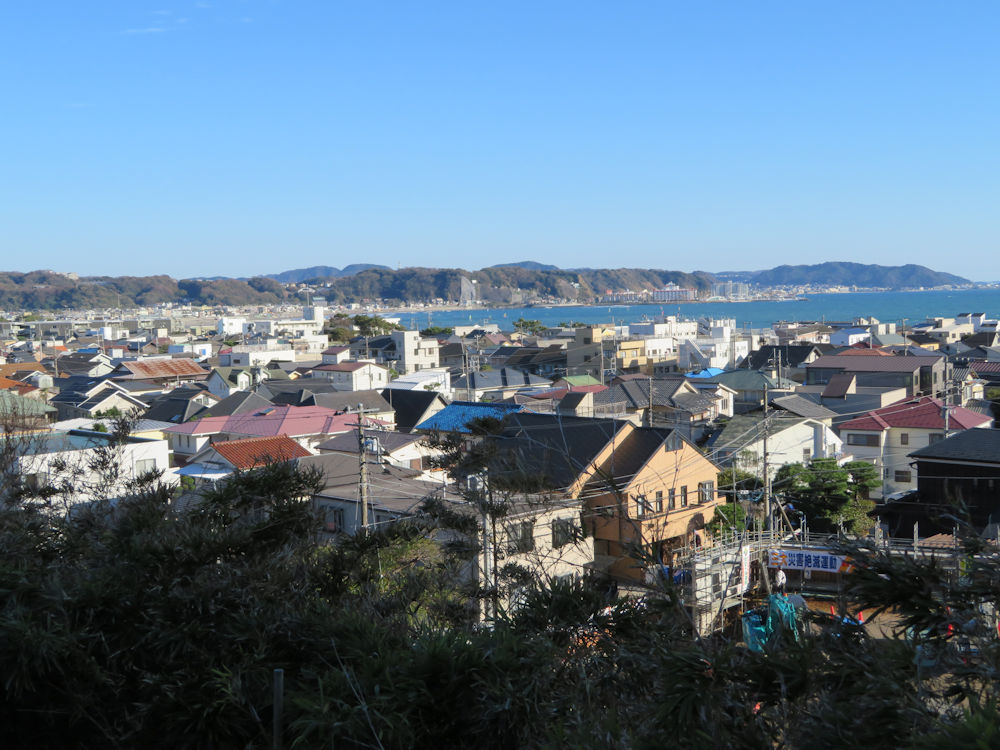
Overview of Kamakura City from Hasedera Temple on the west. Kamakura surrounded by hills and Suruga Bay is where Japan's first military government was established at the end of the 12th century.
The monarch of UK reigns but does not govern. The current Japanese Emperor is the same. Historically it was not the same. Until the 9th century, the emperor governed, and the government was in Nara and later Kyoto. That is one reason that Nara and Kyoto continue to be the most popular tourist site because of its ancient heritage. But from the 10th century, the practice of the emperor reigning but bestowing governing to their subordinates started. Initially the powers were assigned to the nobles. Particularly famous is the Fujiwara Family who married their daughters to the imperial family. But the nobles, good at maintaining tradition and polishing arts were not capable of policing, defending Kyoto or settling feuds between the emperors to be or settling riots in the countryside. These tasks were assigned to lower ranking nobles. Two prominent warrior groups gained power. These were the Minamoto clan (Genji) and Heike clan (Heisi). The civil war at the end of the Heian era in the 12th century could only be resolved by the clash between the two warrior groups, with Genji becoming the winner. As policing was more important in the east because of the distance from Kyoto and the existence of eastern people that had not yet fully succumbed to the government in Kyoto, some strong warrior groups developed in the east. This was the origin of the samurai.
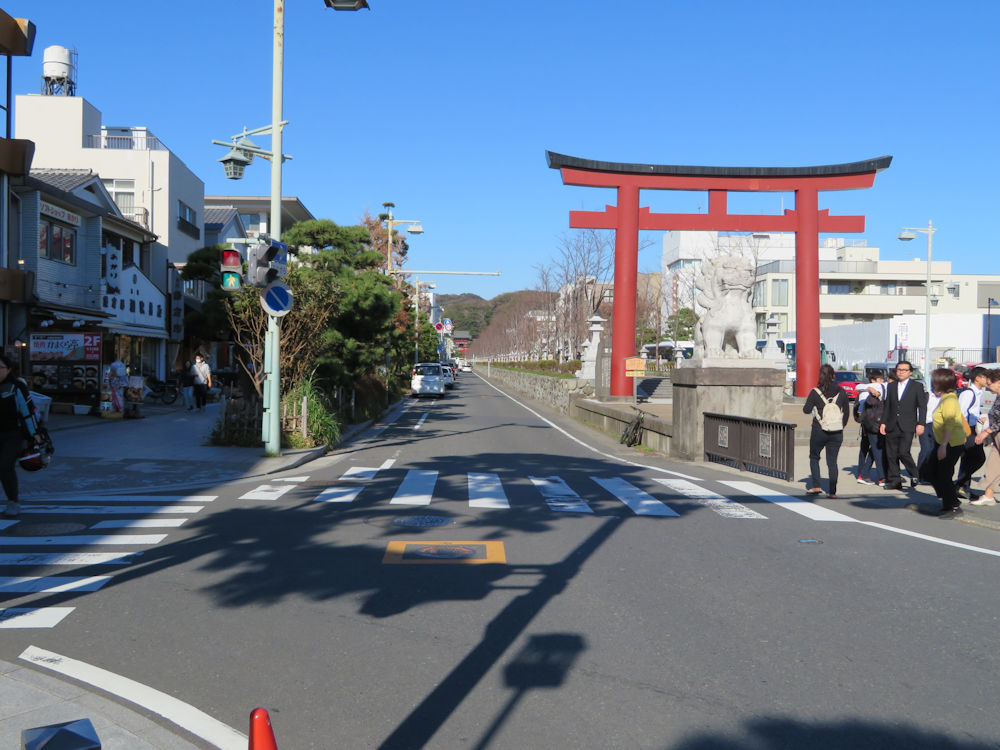
Looking north towards Tsuruokahachimanguu from Kamakura Station area. This high street is called Wakamiya-ooji. The Kamakura military government offices were headquartered to the east of Tsuruokahachimanguu, and the samurai residences to the south. There is another lane to the right of the lane you see in front (you can see the traffic in the picture). Between the two lanes is an elevated path called dankazura.
The emperor bestowed the title of Seiitaishougun (meaning the champion against the east) to Yoritomo Minamoto and gave him permission to govern Japan on his behalf. This practice of bestowing the title Seiitaishougun and allowing military rule by the samurais continued until 1868 when the Tokugawa shougun surrendered governing authority back to the emperor. Yoritomo Minamoto established a government in Kamakura in the late 12th century. Another development was the arrival of Zen Buddhism to Japan around the same period. Zen, because of its stoic teaching encouraging meditation, simple life as opposed to the nobles spread among the samurais.
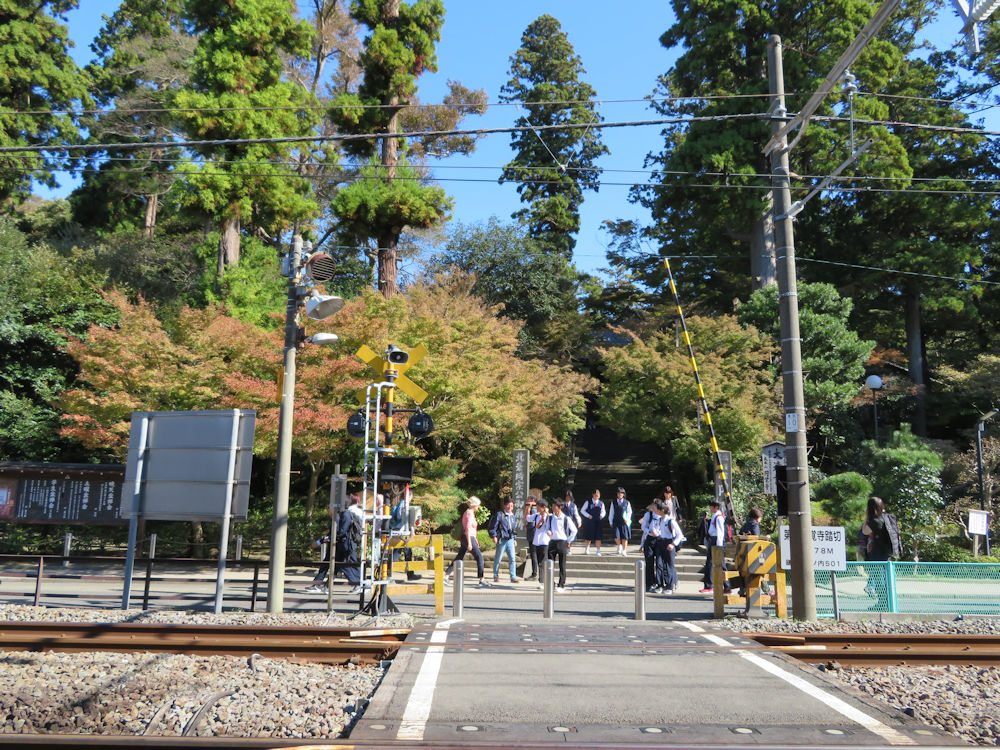
Many tourist groups had just started their tours of Kamakura. JR Kitakamakura Station is on the immediate left. The entrance to Engakuji Temple is in the far back.
Kamakura, a small city with a population of 170,000 is only fifty kilometers south of Tokyo and has a wealth of tourist sites, reflecting its samurai and zen heritage. We were thinking of somewhere near Tokyo suitable for a day excursion for a British couple visiting Japan for the first time in a months’ time, and Kamakura sprung to our minds. Although living not that far away from Kamakura ourselves, we hadn’t visited for years and so we decided to re-explore Kamakura in preparation of their visit. We took the JR Soubu-Yokosuka Line from Tokyo to Kitakamakura. We arrived at 10am and were surprised to see so many travelers grouping in front of the station to start their tours.


The grand Sanmon gate (left) is where you leave your earthly lusts as you go through the gate and prepare yourself to visit the main temple (butsuden) (right).
Our first visit was to Engakuji Buddhist Temple of the Rinzai zen sect close to the station. The Mongolians invaded Japan from the sea but were defeated in 1274 and 1281. By then the Genji Family’s ruling power had transferred to the Houjou Family. Tokimune Houjou who was loyal to zen belief invited a prominent Chinese zen priest Sogen Mugaku to found Engakuji to pray for the spirits of those that had lost their lives in the two invasions. Engakuji was founded in 1282, approximately thirty years later than nearby Kenchouji founded by Tokimune's father Yasutoki and a prominent zen priest Douryuu Rankei.

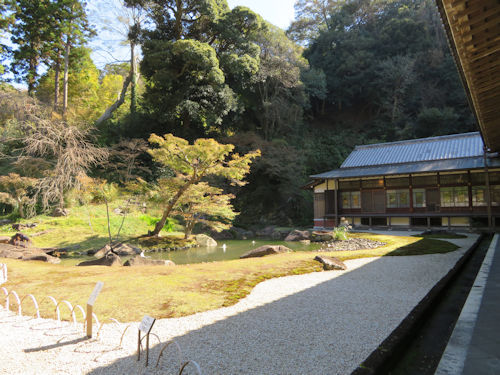
It may be worthwhile to explore the zen style Japanese gardens. (left) The garden as you approach the Shariden and (right) the main garden in front of the houjou (originally where the head priest lived but nowadays more used for other activities).
Engakuji was built in a very orthodox zen style. Worth seeing is the grand Sanmon (main gate), the Senbutujou where zen meditation is held and the Shariden at the very back which is a classic pagoda built in the middle of the 15th century and designated as a national treasure.
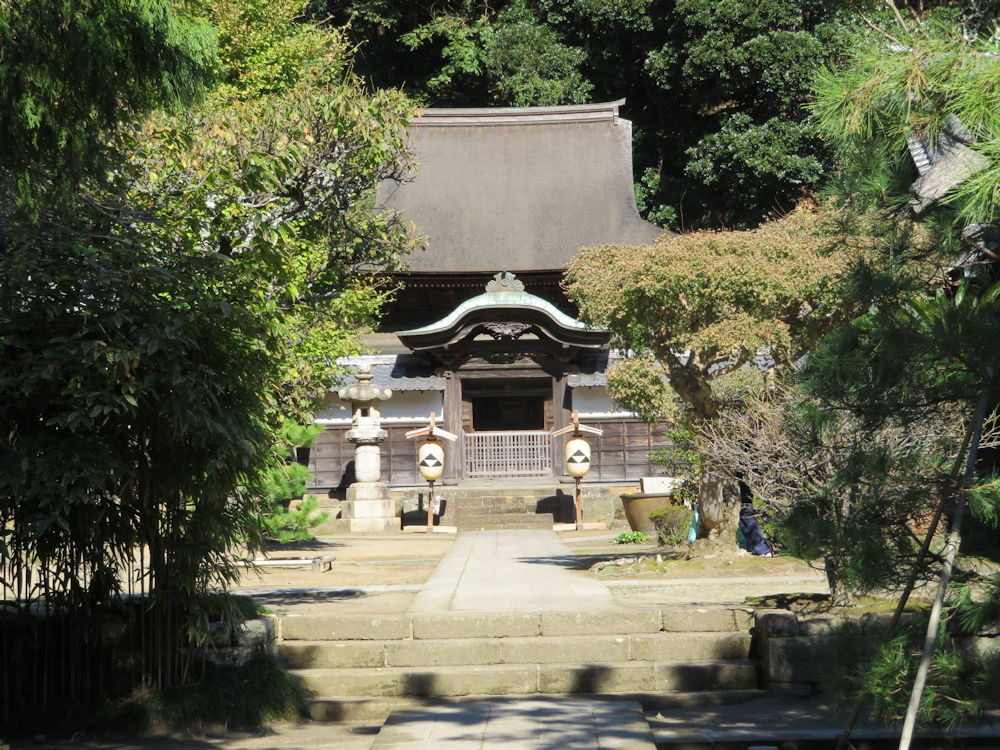
Shariden at the very back which is a classic pagoda built in the middle of the 15th century and designated as a national treasure.
Actually there is another national treasure which is the temple bell forged in the early 14th century. The climb to the bell tower is quite steep and long, so it may make sense to skip if you wish to preserve your energy for the rest of your tour.
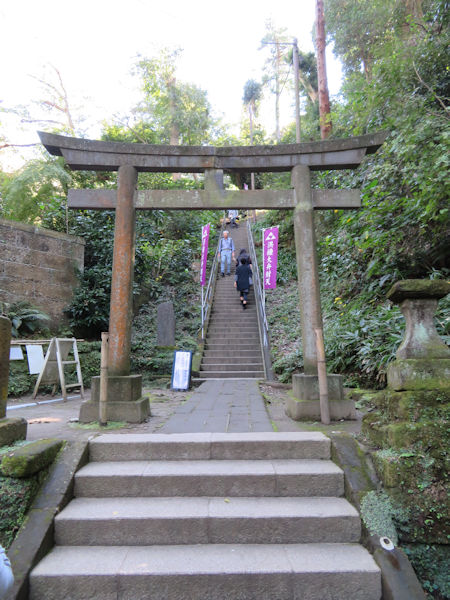
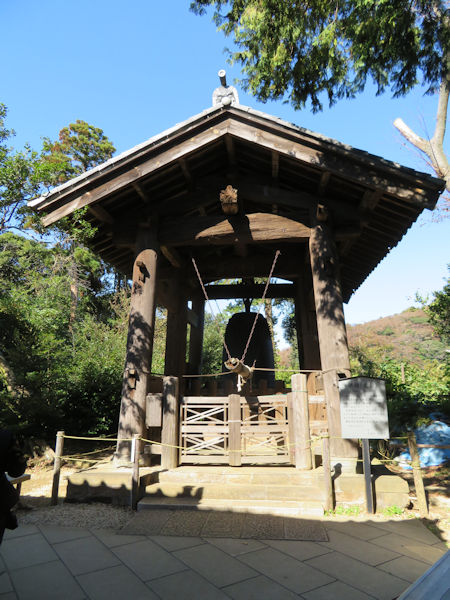
(left) the steps to the bell tower. It's much steeper and longer than you would expect. (right) The bell tower. There is a Japanese cafe at the top.
From Engakuji we walked twenty minutes south along the main road to Kenchouji Buddhist Temple of the Rinzai zen sect. Kenchouji was founded thirty years earlier than Engakuji in 1253. Tokimune’s father Tokiyori Houjou invited the Chinese zen priest Douryuu Rankei as the first high priest of the temple.

The grand sanmon (main entrance gate) of Kenchouji Temple built in the late 18th century.
We started to explore the main buildings which stand in one row. Unfortunately, none of the original buildings have survived. The oldest building is the main temple built and relocated to this temple in the 17th century. This building was the mausoleum of the wife of the second Tokugawa shougun Hidetada. The interior of the main temple can be better appreciated with the understanding that this was a mausoleum of the Tokugawa family. The temple bell, a national treasure, is one of the few objects from the original temple that have survived to this day.
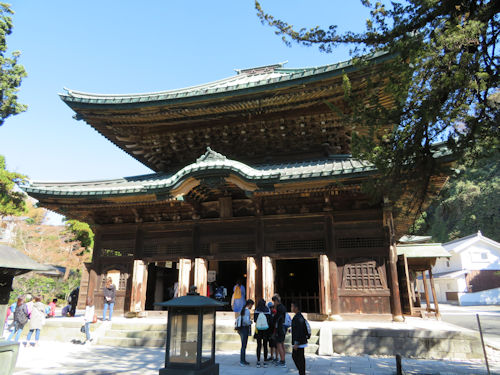
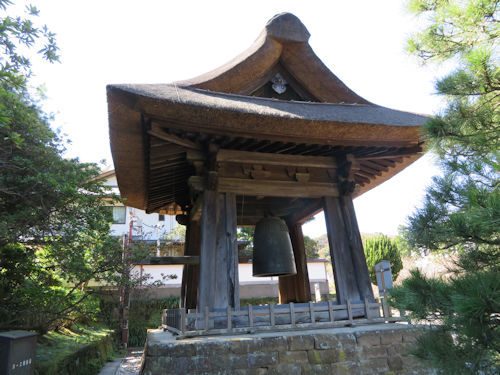
(left) The main temple building was originally the mausoleum of the wife of the second Tokugawa shougun Hidetada relocated to this temple in the 17th century. (right) The temple bell from the 13th century is a national treasure.
We visited the zen style gardens around the houjou (originally where the priest lived but nowadays more used for zazen meditation and administration). Zen style gardens are simpler because of its stoic belief and also as they wished to differentiate themselves from the older Buddhist sects with grand gardens such as Uji Byoudouin in Kyoto. Zen gardens developed further into the rock and water gardens such as that in Ryouanji Temple again in Kyoto. If you compare Kenchouji with nearby Engakuji Temple founded thirty years later by Yasutoki's son, you can easily see that the zen style of Kenchouji's buildings and gardens are older and simpler.
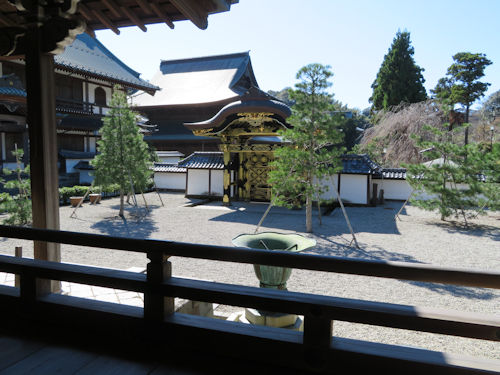
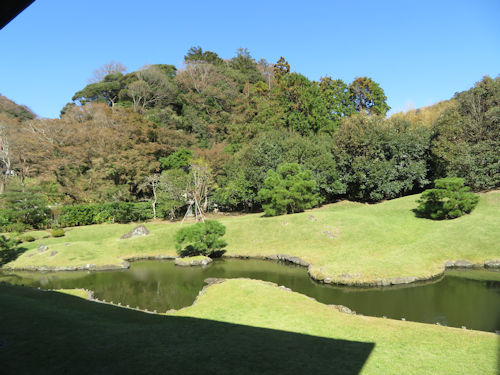
(left) The simple style garden in the front of the houjou. The grand gate called Karamon from the 17th century was the gate to the mausoleum of the wife of the second Tokugawa shougun Hidetada and relocated here. (right) View of the main garden from the houjou.
From Kenchouji Temple we walked twenty minutes to Tsuruoka Hachimanguu Shinto Shrine. It was past noon by then so we decided to have lunch in the Wakamiya Ouji or Komachi doori the two high streets leading to Kamakura Station from the southern perimeter of Tsuruoka Hachimanguu. Although it was a weekday, all the restaurants were quite busy with many travelers including school excursions and overseas visitors as well as Japanese tourist groups. It was quite obvious that Kamakura had become much more popular and international since I last visited the city. As can be expected for a tourist city, we felt that the prices for a traditional Japanese meal was quite inflated. We finally settled for a Japanese restaurant very close to the Shintou shrine. It appears that soba with tempura and shirasu-don (local tiny fish on a rice bed) are the most popular dishes in the area. Forgetting the price, I believe trying those are the safest option.
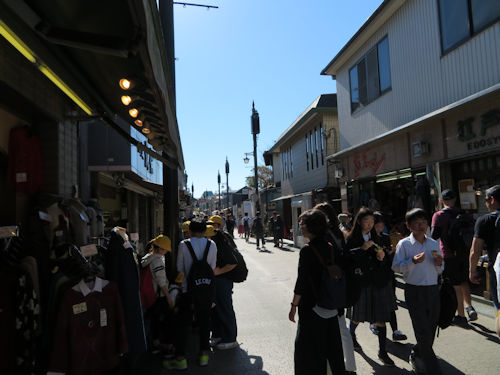

Although it was a weekday, Komachi-doori was very crowded at lunchtime (left). (right) A lunchtime menu. The dish on the center right is shirasu/tuna don and the dish on the bottom left is tempura soba.
We went back to Tsuruoka Hachimanguu. The warrior God Hachiman is worshipped at Hachimanguus. Historically the first hachimanguu was founded in the early 8th century in Usa, Ooita Prefecture. Usa Jinguu is the leader of approximately 46,000 hachiman shrines in Japan.
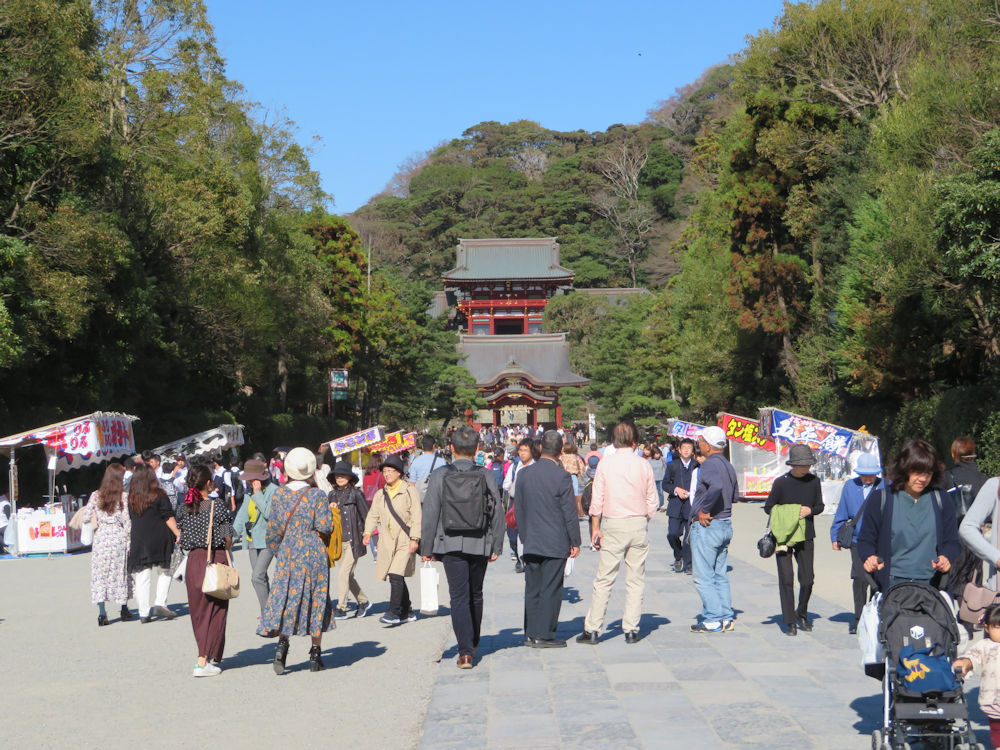
The approach to Tsuruokahachimanguu. Food stalls are a common sight as you approach temples and shrines. Although the building in the back seems like a two story pagoda, it really is the main gate and the main shrine further back and on higher elevation.
In the 9th century, Iwashimizu Hachimanguu was founded in Kyoto by order of the 56th Emperor Seiwa as a branch of Usa Jinguu. The Minamoto clan who claimed to be descendants of Emperor Seiwa particularly revered Iwashimizu Hachimanguu, and when they founded the Kamakura government in the 12th century, they founded Tsuruoka Hachimanguu as a branch of Iwashimizu Hachimanguu. From then Tsuruoka Hachimanguu became the spiritual support for the samurais and the Tokugawa shogunate. I went up the steps to the honden (main temple) and visited their treasury museum for the first time. As a revered religious site it had quite a few interesting displays including an old refurbishment plan. The admission fee is only 200 yen, so it may be worthwhile to see the displays and view the interior of a honden, which is a rare opportunity.
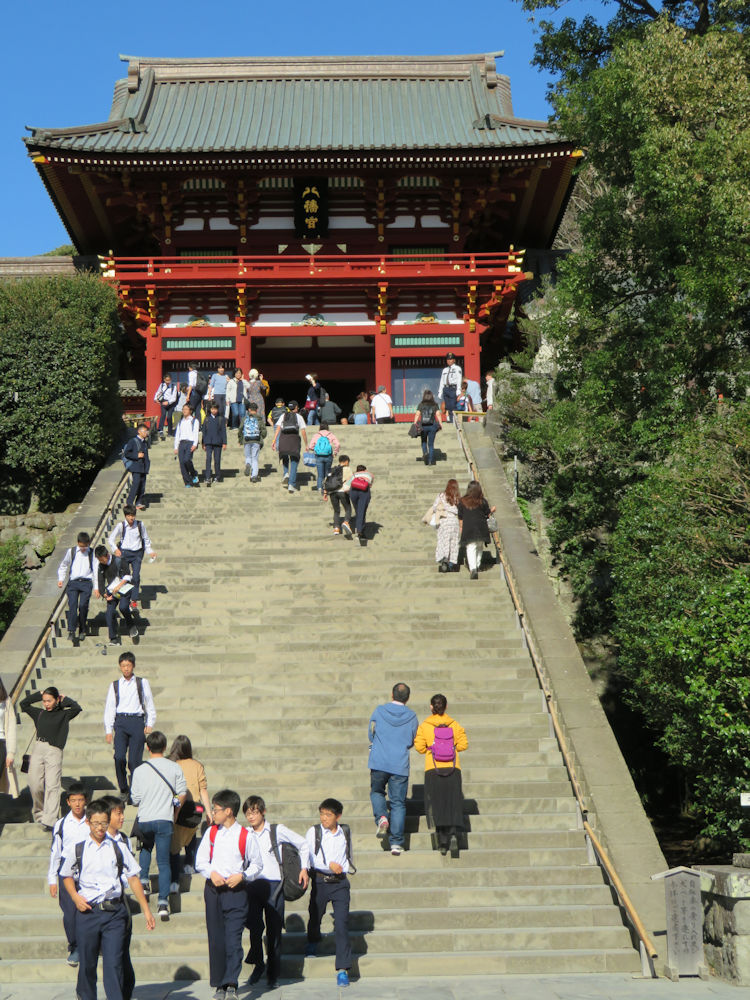
The climb to the main shrine after you go past the main gate.
From Kamakura, we took the Enoden Railway to get off at Hase Station which is the third stop. The official name of Enoden is Enoshima Electric Railway Company but everybody fondly calls it Enoden. The entire route is a single line of ten kilometers between Kamakura and Fujisawa and has a history of over 100 years. It is a very popular route because of the scenery and tourist spots as well as its classic and nostalgic appearance.
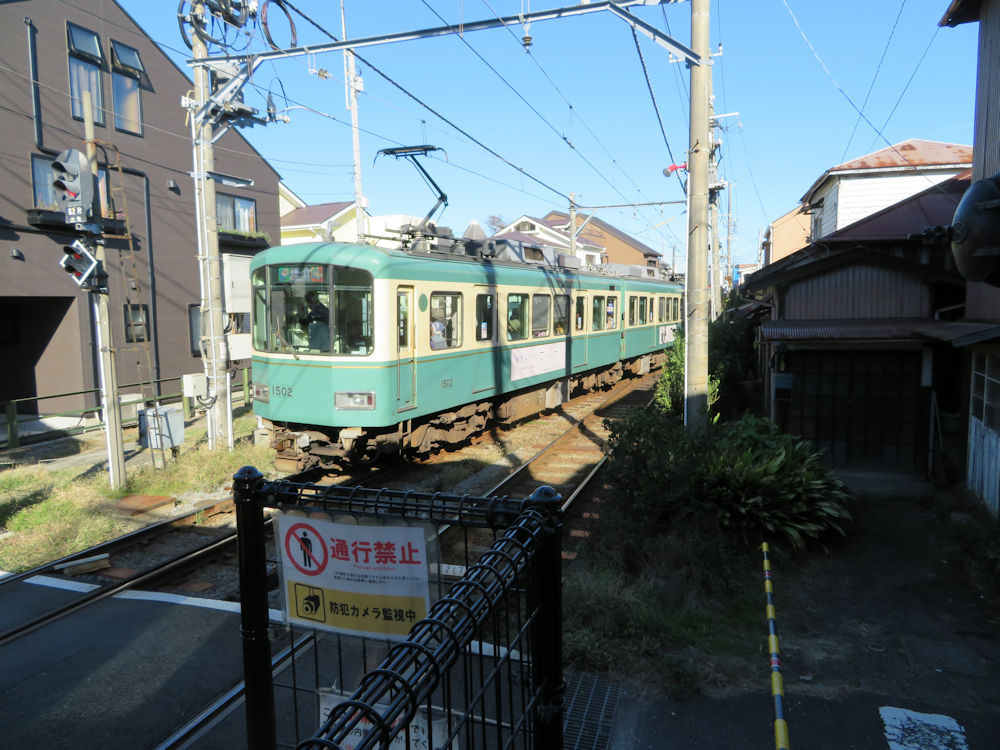
The entire route of Enoden is a single line of ten kilometers between Kamakura and Fujisawa and has a history of over 100 years. It is a very popular route because of the scenery and tourist spots as well as its classic and nostalgic appearance.
Hasedera Buddhist Temple, which is less than a ten minutes’ walk from Hase Station, is one of the oldest temples in Kamakura. It is said that the temple was founded in the 8th century but the earliest objects in possession of the temple are from the 13th century. All the buildings collapsed in the great earthquake of 1923 and were rebuilt later. The main temple which is on an elevated level houses a nine meter high eleven faced kannonbosatsu (to learn about kannnonbosatsu, click here), one of the largest wooden Buddhist statues in Japan. This is why Hasedera Temple is also called Hase Kannon.
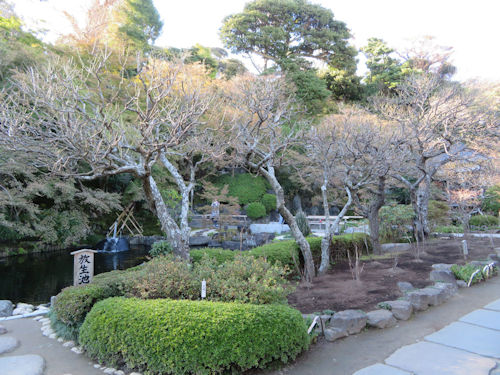
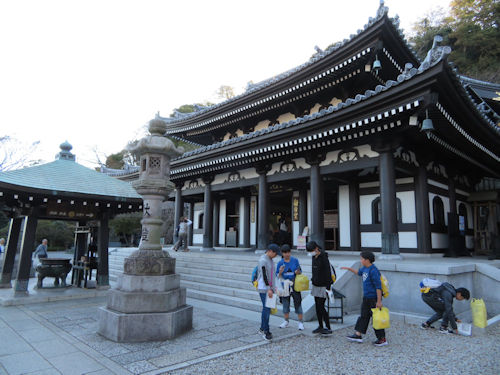
The beautiful garden (left) and the kannondou (main temple).
Hasedera is a favorite tourist spot because of its beautiful gardens, the nine-meter-high wooden kannonbosatsu and the scenery of Kamakura from the top.

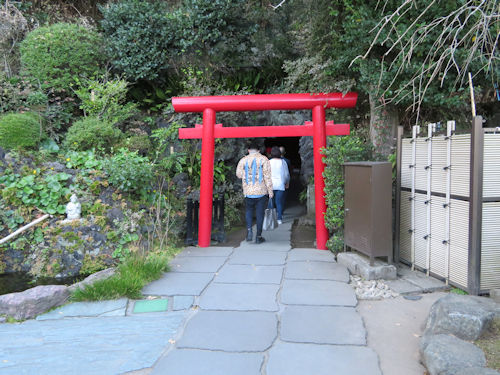
You can command a good view of Kamakura City from the main temple (left). There is a Shinto Shrine on the lower level which is a tunnel through the rocks. The existence of a Shinto shrine was important for the Buddhist temples to demonstrate they were in good terms with the older gods in the area.
We then visited Koutokuin Temple and its Daibutsu (gigantic Buddha statue). It is basically a bronze statue with a height of thirteen meters including the sitting bench. It was built in the 13th century. Originally it was housed inside a temple but has been sitting outside after the temple collapsed in the 14th century. What is remarkable is the fact that the statue retains its original features from the 13th century. The Great Buddha in Toudaiji Temple, Nara is older and taller (about fifteen meters), but very little of the original statue has been retained.

The former Russian consulate built in 1908 was used as a consulate until 1944.
The inside of the statue is hollow and you are allowed to enter. Although it was a week day the Daibutsu was as busy as Tsuruoka Hachimanguu. It appeared the same tours of students and group travelers were following the same route. The queue of people waiting to go inside the Daibutsu was quite long, so we left it for the next occasion.

The queue of people waiting to go inside the Daibutsu was quite long, so
we left it for the next occasion.>